#fairytale deconstruction
Text
I just clicked what my favorite adaptation/version of Cinderella is. I mean, I kind of knew back then, but I didn't realize it because at the time Cinderella wasn't a story I was really interested about, and I hadn't gone into the entire Cinderella rabbit hole. But if you ask me what my favorite Cinderella retelling is, it is definitively the story of Emberella as presented by Terry Pratchett in his "Witches Abroad" novel.
Yes it is kind of a parody and deconstruction of the Cinderella story (and a quite excellent one at that), but it also works very well as its own fairytale - plus it literaly predicted/foresaw Disney's "The Princess and the Frog" 18 YEARS before the movie was released.... and while slapping so hard the face of the Disney company.
Yeah, Emberella is my favorite version of Cinderella.
#cinderella#terry pratchett#witches abroad#emberella#discworld#fairytale parody#fairytale deconstruction#disney's the princess and the frog#and who doesn't love evil fairy godmothers and vodou gods battling in what is the Disneyland castle thrown in the middle of a bayou#plus meddling witches and masked ball#AND there's a good focus on Cinderella's father and why he is absent here#honestly this is an excellent case study of a deconstruction of the cinderella story
252 notes
·
View notes
Text
i think the Jedi-Positive and Jedi-Critical stances can be summed up on whether you value authorial intent or authorial execution.
Most of the Jedi-Positive people I follow quote George Lucas and director commentaries to prove their points, as well as utilize analyses from others at LucasFilm that have to keep the general status quo. It's all based on what Lucas was trying to portray, while ignoring the product in execution.
The Jedi-Critical stance tends to look at the prequel execution, and they question the obvious uncomfortable moments that have real-life parallels to atrocities. They tend to be more Legends fans, whose writers actually delved into the terrifying implications. It's all on criticizing execution while disregarding intent.
Like, take the argument about Jedi children. A Jedi-Positive person would argue that all the children are all given up with consent from their parents; this is what I am sure Lucas was intending to portray. A Jedi-Critical person will look at this and go "wait. how much 'consent' was in this encounter? the government can legally take these kids and have a representative show up to a farmer's house and tell the farmer they can technically say no? that is some bullshit." And there is real-life evidence for this. It's more on the execution.
Or the argument about love. Jedi-Positive people turn to Lucas's interview to show that they really meant it in the Buddhist sense, and if you value intent that works. Jedi-Critical people would argue that the marketing states that the Jedi cannot love, and nothing in the movies states that the Jedi meant non-toxic love when they eschew attachments.
They're both valid positions, but I think a lot of fandom brutality comes from not understanding either view, or demeaning one view in favor of another. It's perfectly acceptable to value one over the other.
#star wars#starwars#jedi#jedi order#the jedi order#star wars meta#sw fandom meta#sw#sw prequels#sw fandom#pro jedi#anti jedi#jedi critical#jedi positivity#I also think a lot of it is also based on filters as well#but i didn't want to crowd the post#lucas used a fairytale structure to write his story#but there's still a huge portion of deconstruction in canon stuff#maybe i'll write more
318 notes
·
View notes
Note
It's been a while since ive last (and first, ive seen it only once) watched utena, but, when akio first shower up, making it clear that he was the prince, i felt kinda. Disappointed. Like, it was an underwhelming feeling that The Prince that falls from the sky and inspires utena to be the coolest person ever (aside from the cycles of oppression, fighting with swords itself is rad as hell) is just. A guy. And a bad guy at that. And I love to remember how boring was that the prince was Just a man, a playboy that just flirts with girls. I get very happy at this felling of annoyance I've had, that, though kind of intented can kinda get washed over with the absurdism of Utena. And later showing how he is an actual abuser it's truly revolutionary of rgu, really. Sometimes the guy everyone thinks is nice and flirts with everyone (even Teenagers) is an actual abuser and like, it's not just a Being a Man thing. It is a patriarchal thibg. Yeah. Utena just call so many things out it'a incredible. Sorry, this ask was mostly a ramble, but thank you too, because ive had fun. Have you also had these overwhelming underwhelmeness when thinking about akio? bcuz even though all correlation i can find of himself building his image as dios and having ohtori resemble so many things and institutions mostly (like marriage, churches, actual schools ofc and society in general) ive never found anything interesting in his character. he annoys me deeply even though he's a very important character of the show
akio is a fascinating character to me, but mostly in what he represents and in what he means to other characters. as a person he is really quite boring. he tries to present himself as important and wise and interesting to these kids who don't know any better (through his current position and through his past as The Prince), but in reality he is just the most awful and pathetic guy in the world. he is not special, and neither is his abuse. it's all horribly mundane. the disappointment you felt is intentional, i think. that shattering of the fairy tale, the realization that princes aren't real, and that people in power will abuse it, is supposed to hurt. it hurts utena, and it's meant to hurt the audience too. but we're also meant to move on from that pain or disappointment, and to learn something from it. why did we have these expectations? where did they come from? what do we do now that we know they're false? how can we move on? how can we change things for the better?
#as for if i felt the disappointment. i don't remember. i don't think so.#i was prepared for the show being somewhat of a fairytale deconstruction#but i still feel utena's pain of realizing that the person she looked up to and shaped so much of her life around#turned out to be the person who hurt her the most. it's awful. but you have to learn to live with it#utena#akio#m#asks
19 notes
·
View notes
Text
French fantasy review: Les flammes de la nuit
I do wonder why I make these posts – about French novels that I do not think were translated in English, reviewing them in English on an English-speaking website… I do know that some French people are lurking around under a mask of Englishness, but still, most people here are those that I guess will never have access to the novels I review… But oh well, I’ll do what I’ll do, as bizarre as it may sound: and what I’ll do is talk about the French fantasy.
I already translated a long time ago some articles written about the French fantasy literature, but here I will share my personal thoughts and favorites when it comes to this genre of fantasy that is considered “foreign” and “exotic” by the simple virtue of… not being written in English. France is the land of literature, and has already bred, nursed and thoroughly exploited and theorized the two genres that gave birth to the fantasy and yet are so hard to translate in English: the merveilleux of fables and epics, the fantastique of 19th century supernatural tales… Why wouldn’t France have fantasy too? The name of the genre stays English, unfortunately, but it has enough echoes and roots within our own féeries and surnaturel to find a place prepared for it since centuries…
Anyway, enough lyrical: let’s get into the meat of the subject, let’s dig to the bone, and I want to begin with “Les flammes de la nuit” (The flames of the night) by Michel Pagel.

When I picked up this book I was not expecting anything precisely from it, I was just curious. I had only ever heard of Michel Pagel through a huge and dark series of his called “La Comédie Inhumaine” that everybody loved and that was renowned as a dark and violent fantastique, but I never read it. The reason I picked up this book was due to its relationship with fairytales. If you do not know I am REALLY into fairytale stuff, I even have an entire sideblog just to talk about fairytales ( @adarkrainbow ). And this novel was advertised as being a fairytale subversion, so I thought, let’s get into it! [EDIT: I actually also had heard of Michel Pagel through another work of his that now I will definitively read, Le Roi d’Août, a supernatural historical novel that faithfully retells the biography of the king Philippe Auguste… While filling some historical blanks in his life by the intervention and encounter of the supernatural folks hiding within the French landscape.]
Most notably, when I checked briefly online reviews to see if I should get the book, all agreed on a same thing: all said that the book was absolutely great, with wonderful ideas and powerful characters… until the very end which had disappointed everybody (at least at the time the reviews were made, so by the 2000s/early 2010s). As a result I went into this novel saying to myself “Okay, the beginning and middle will be great, the end will be bad, get ready”. And… what a surprise! The ending was not bad at all. A bit confused and rushed but… it was a good ending. Or rather a fitting ending (because it is not a happy or positive one, nor is it a negative one – it is a grandiose, tragic, bittersweet but hopeful ending perfect for the tone of the novel and the project the author set upon himself). If you ask me, all the reviews were wrong – and I had been deceived for the best, since the novel surpassed what I was expecting. Now, I won’t throw the stone, I actually understand why these readers were disappointed with the ending and I’ll explain why (spoiler: it is a question of context and point of view). For now, I’ll simply say that I greatly love this novel which definitively goes into my top French fantasy novels.
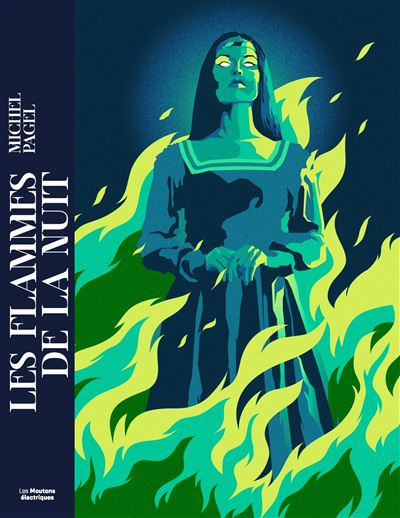
In terms of editions and publications, a few indications… This is one of those typical edition thingies that are so peculiar to France. The novel was originally published as a series of novellas. Four in total, between 1985 and 1987, in the “Anticipations” collection of the Fleuve Noir publishing house (it was still in this era where in France fantasy and sci-fi were sold together as one and the same). Later, the four novellas were collected into one full volume, one novel divided into four parts. This complete volume was published in 2000 (in a small format by the J’ai Lu Poche Fantasy, in a large format by Denoël collection Lunes d'encre), and it is both the version I read and the one most people refer to when talking about “Les flammes de la nuit”. I do not know if the text was edited or slightly rewritten for this new format – I don’t think so, but I have to admit the text felt so much like an early 2000s story I was quite surprised it came from the mid-80s… There’s quite notably the fact the main character is openly bisexual, but hey, the 80s in France were quite a time too… More recently in 2014 Les Moutons Electrique republished the integral in a large format, and then in 2022 in a middle format, proving this novel’s great and enduring success.
[Note: As I am writing this post I made a quick checklist and I just discovered that Michel Pagel actually was the French translator of Neil Gaiman’s Anansi Boys and American Gods, as well as of Gary Gygax’s Monster Manual for D&D… Wow, that was a total surprise – and it does explain some things, I notably see how Neil Gaiman’s writing could have had an influence over this novel…]
Let me briefly set you in the mood the very first pages plunge the reader into… We follow an old man who is travelling on a pilgrimage to a great lake at the center of a medieval kingdom name Fuinör. He isn’t just any old man: it is but one of his masks. He is the Enchanter, a great and powerful wizard as old as the universe itself, a supernatural being known to take many forms, and who can be as much a wild animal of omens as a seducing woman luring knights to an uncertain doom… Once he reaches the great lake, called the Mirror for its still waters form the perfect reflection of the sky and the sun above it, in a great burst of light, the sun disappears… and reappears. But the sun is not golden anymore: it is green. And with the sun everything changed color within Fuinör: the sky is not blue but indigo, the sea is the color of emerald, the trees have blue leaves, human skin is orange… And this is perfectly normal, for in the world of Fuinör, every seven years the sun is reborn above the lake, turning into a different color, and with it everything in the world also changes its hue. And as such, seven year by seven year, the light goes through all the seven colors of the rainbow…
This sets the stage for what “Les flammes de la nuit” is. And it is many, many things, a story which likes the sun of Fuinör undergoes different stages and tones (the serial publication helps this feeling of slow transition and evolution throughout the novel).
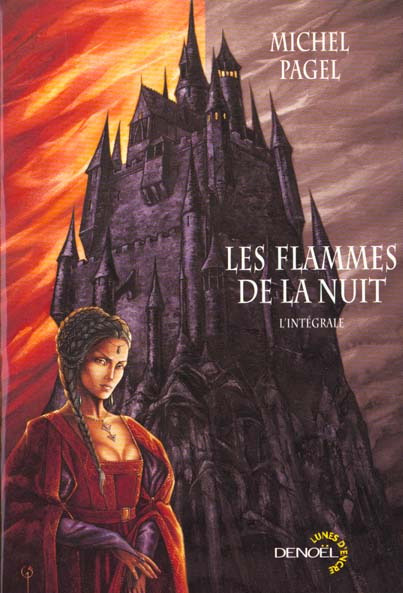
The story opens as an open, cynical and dark parody of fairytales – for the world of Fuinör is a world of stock fairytales. It is a world in which, when the king has a daughter, seven fairies, each for each color of the rainbow, arrive to bless her with all the usual gifts – beauty, grace, singing – while carefully avoiding anything like strength or intelligence, for these are male gifts for those destined to rule. It is a world in which, when the queen gives an heir to her king (and there is always only one king and one queen), she must die in labor – and if she happens to survive… then the royal doctor must prepare a certain powder to make sure the queen respects the tradition. It is a world where barons often declare themselves vile rebels and wicked usurpers and try to overthrow the high king… but they are always defeated because the law claims there can only be one rebellion at a time, and each baron must warn in advance the king and let him decide how, when and where he wants to do the battle. It is a world where there is a land for each thing – quite literally. Fuinör is divided into different “countries” each dedicated to a specific area: there is a land of Hunting, where the hunts take place, and any hunting elsewhere is outlawed. There is a land for War, and nobody would ever think of waging war elsewhere than there. There is a land for Love, and all love and romance and sex can only take place within its boundaries. Such as the laws, and the customs, and the traditions, and they have always been since the beginning of time…
Fuinör is a mix of all the classical fairytales and the traditional medieval romance and Arthurian tales – but all taken to an extreme. Fuinör is a world stuck in an endless cycle of loops, where the events all repeat themselves in the same way with predictable end, where everyone is given a specific role and fate since birth, where everything is stuck under an order that has been decided by ominous gods a long time ago, and where no surprise and no disorder can ever happen. The brave knights in shining armor always win the heart of princesses, the high king is always victorious of anyone that tries to take his throne – and if someone ever does, THEY are the rightful high king and the other is the usurper – and the peasants… well who cares, they don’t count, they’re not even considered human, they are just here to work and be background props.
But things will change… Things will change thanks to the Enchanter, who decides that when the new princess of the kingdom is born, little Rowena, she shall receive a gift no other princess ever received… the gift of intelligence. An intelligence that will allow her to understand the absurd logic of her world, and use the sclerosis of archetypes and the rigidity of millennia-old customs to her advantage. An intelligence that will make her greater and more powerful than anyone – an intelligence that will threaten the very existence of Fuinör… Thus is the beginning of “Les Flammes de la Nuit”.
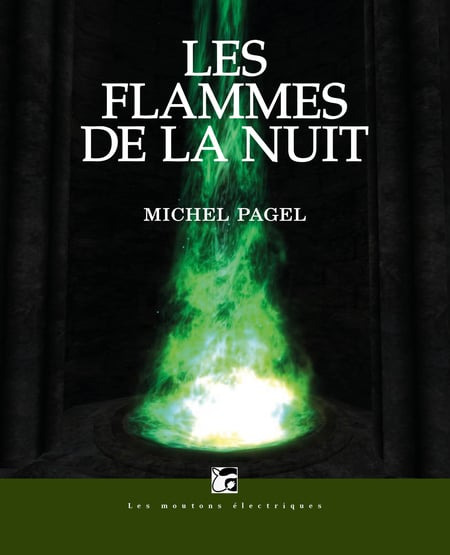
The beginning of the novel, Rowena’s own youth and story, is clearly designed to deconstruct all the archetypes, stereotypes and point out all the bad side of both the generic fairytale (especially Disney’s version of fairytales – the novel is filled with jabs at Disney and the “Americanized” fairytale, the seven fairies being basically Disney’s fairy godmothers mixed with Glinda from The Wizard of Oz MGM movie) and of the Arthurian romance as we know it today. It does not mean Michel Pagel hates those genres, quite the contrary! This book heavily pays homage to both domain, in which Pagel has clearly a great interest. In fact, this book is much more “medieval romance/Arthurian epic” than fairytale in tone, and while anybody who saw the Disney movies or read Perrault will get the fairytale references, I do believe someone with zero knowledge of the Arthuriana will miss a LOT of cultural jokes and clever references in this text. From the get go the Enchanter is clearly supposed to be inspired by Merlin from the Arthurian myth – but not the Disneyified, Americanized Merlin. The original Merlin, Myrddinn, the mythical, legendary, ambiguous and terrifying entity that exists beyond shapes and times and manipulates fate as he pleases… In a similar way, if you haven’t done any research on the evolution of the legend of Avalon you won’t get how twisted and cool the climax within the domain of the Fairies is… But I won’t reveal too much spoilers.
But loving doesn’t mean being uncritical, and this book is clearly the result of Michel Pagel thinking about what he adores, and highlighting in an entertaining way all that is wrong with those classical tales. The first part of the story is centered around Rowena, this intelligent and daring girl born within a world of the worst fairytale stereotypes and outdated medieval chivalry. And as she grows up she gets to explore what others were too afraid to explore, she understands what nobody understood, she gains power nobody had access to before… all the while suffering from what her world really is: unfair, classicist, sexist, misogynistic and abusive. And this begins already the bittersweet tone of the novel. At the same time we have a very funny parody that enjoys dark humor and plays all the code of the traditional “fractured fairytale”, and yet it alternates with very sad and dark moments where Rowena is confronted with the cruelties of such a universe and understands why being an intelligent girl in a world where women are to be submissive and stupid can be dangerous. But all is in fact set and prepared for her own fate, prepared by the Enchanter in person: for Rowena will become… the Witch.
And of course I love this, because who doesn’t get to love a dark retelling of fairytales, who doesn’t like a faithful retelling of medieval epics with an acute sense of modern values clashing with outdated morals, who doesn’t get to love the story of how a girl became a witch-queen? But… I think this is where the “fracture” with a certain part of the audience happened. I will return to the reviews I talked about above: many people thought the ending was worthless or were betrayed by it. Having read the novel I understand why they felt that: in their own words, they were sold and expected a feminist retelling of fairytales about breaking conventions and stereotypes. They were sold the story of a girl being a hero, and the old fairytale clichés being mercilessly mocked and denounced and beaten upon. And that was it for them. As such, yes, the ending probably disappointed them… Because it isn’t what the story is about.
It is made clear in the beginning of the story: being a Witch is not a pleasant thing. It is not a power fantasy. It might look like it, and Rowena uses it as such, but we are clearly warned that a Witch is still an unpleasant, dangerous and sometimes disgusting existence which will require suffering, both inflicted by the Witch and received by her. It is in such a path Rowena sets herself upon – and this is part of a greater scope of things. Rowena is the main character of the novel, but she is part of a wider plot by the Enchanter. The Enchanter wants to break the endless, frozen cycle of Fuinör. He wants to destroy those paralyzing traditions and this unnatural order. He wants to plunge back the world into chaos – a benevolent, needed, positive chaos, but a chaos still. And one of the very strong messages of this tale is: a need to go beyond Manicheism. To go beyond simplistic duality or archetypal characters. What Rowena, and the Enchanter, and others later, bring is complexity. The entire point of the novel is to go beyond the idea that there is all good and all bad, clear cut good and evil, black and white. As such, slowly as the cosmic battle wages on, as the Tradition and the Divine Law unravel, the characters grow into shades of gray as all their values, their positions and their allegiances are redefined, put to test or exposed, as the very machine of the universe starts to be pulled apart. Characters that start out as nice and lovable heroes turn into selfish villains. Characters that appear as flawed jerks and unsympathetic narrators learn from their mistake and grow heroic and wise. Courageous warriors grow into cowards, figures of sanity become mad, and this entire novel is the story of one huge revolution where everything changes: moralities, social hierarchies, laws of justice, and even genders! (The novel notably features an exploration of non-binary genders through one specific character – or three depending on how you count it – not including the various shapeshifting of the supernatural entities, which again helps make it resonate with a modern audience despite being around for quite a long time)
As such, no, this story is not a feminist power fantasy, and those that go in expecting this will be disappointed. It is a much, much larger and complex story about an entire world, about this fictional place born out of the classic fairytales and the medieval romances and the Arthuriana, and how this thing is confronted with its own choice of “evolve or die”. And this is still a very powerful and admirable story, which at the same plays subverts tropes, while also playing many clichés and stereotypes straight, but with a clear knowledge of this. Some people in the reviews said they were disappointed that ultimately, it seemed that Michel Pagel, in trying to break down and denounce clichés, ended up himself reasserting those same clichés. And I honestly do not think it is the case – as the novel is rather a strong defense of “We should get rid of all clichés and stereotypes, because they’re always going to trap us, no matter on which side they are”. But again, I can’t reveal too much without spoiling this long modern epic.

A good example of why for example this novel isn’t a pure “feminist fantasy” as many believed: Rowena is not the only main character. There’s another one, a “male counterpart” so to speak of the Witch-Queen in training. A character who doesn’t really have a name (well he has one but it is kind of a spoiler domain), and whose own backstory forms the second part of the novel (or the second novella of the series). A character who lives in a different part of Fuinör, and also should have been trapped in a cycle of millennia-old rituals and binding traditions and unfair customs, but whose fate changes completely due to the interventions of the Witch and the Enchanter… Except that, whereas with Rowena we had a bittersweet parody of Disney movies and traditional fairytales, with this second character we rather explore a deconstruction and attack of a different type of folktales. There is notably a brutal takedown of the whole “Journey of the Hero” system and the “Monomyth” idea. And I don’t say “brutal” lightly: this part of the novel is very, very brutal, physically speaking. Because this second main character is the helpful companion on the road in fairytales that helps the hero get the girl while himself having nothing. He is also the stock archetype of the Fool doomed to make mistakes and be ridiculed or punished. And he is the False Pretender, the False Hero of fairytales here to put in value the True Hero… Except we are told the story through his point of view. Except he is not evil, he is a guy who is trying his best but is put in an unfair position and only gets endless bullying. Except the True Hero doesn’t seem to be deserving of his position, and the question is raised of “Maybe the other guy should have been the Hero”… But here we shift into a fantasy version of what Terry Gilliam’s “Brazil” was and we fully explore the magical dystopia that is Fuinör.
Overall I do have to say… I think so far the closest thing I have seen in terms of overall tone and ambiance, in the English-speaking world, to compare these works… would be Dimension 20’s season “Neverafter”. Both works deal with a very funny parody but also very dark twisting of fairytales and folktales. Both deal with characters being abused and going through horrors at the end of great cosmic powers and otherworldly narrators. Both tread between comedy and horror ; and both deal with the protagonists’ attempt at breaking endless cycles set upon by fairies (because, in both Pagel’s novel and Dimension 20, the fairies are one of the numerous antagonists as the ruthless and terrifying enforcers of the “laws of fairytales” that get everybody stuck in their roles and functions). Of course, the two works are very different beyond that… But there is a common bone.
A final element I need to add so that you get a full understanding of this novel: Michel Pagel placed his book under the patronage of Shakespeare. And if the fact every part opens with a quote from one of Shakespeare’s play, from Hamlet to Macbeth passing by Romeo and Juliet, King Lear and more, wasn’t enough, anyone versed in Shakespearian studies will see how among the many archetypes and stock tropes of the novel, those of Shakespeare also regularly pop up. Someone once wrote that this novel started out as a fairytale parody, but slowly evolved into a Shakespearian tragedy, and I cannot agree more. It does start out as a dark and morbid but entertaining parody – and then things get really brutal, really violent, really sad, really serious, and we enter a terrible and dreary fantasy, but still very poetic and very human, that moves towards a universe where all of Shakespeare’s greatest cruelties fit right at home. The novel most notably has a lot, a LOT of fun exploring the Shakespearian archetype of the “Fool”. There’s almost two handfuls of characters that each is meant to explore a different aspect of the Shakespearian Fool, each expressing a difference nuance of it (the famous non-binary character is one of them, paying homage to the typical gender-plays and gender-questioning within Shakespeare’s plays) – and I am glad to be a Shakespeare enjoyer when reading this novel because again, a random person with zero Shakespeare knowledge would miss a lot of things. (Which again is I believe the reason the Internet reviews attacked this novel, there is a certain degree of medieval and literary knowledge needed to get the parts of this novel that pay homage to the older texts and more ancient roots of the clichéd, Disneyified myths we have today… Without it the novel can still be read, but it might seem much weirder and bleaker than it truly is)
Finally a flaw, because there needs to be a flaw in every review, it can’t all be glowing: I do admit that of the four parts composing this novel, the fourth one did felt unbalanced. Notably the author seemed to spend too much time, description and effort on characters barely introduced (which at the ending climax of a story is not good), and not enough on the characters we were following since the very beginning… But I will blame that on the fact the fourth part was originally meant to be an independent novella read one year after the last part was published. I do believe that, while putting the full series in one volume is quite convenient if you want to buy something to read over holidays, it does make one feel a bit tired by the end since you literally absorb four years of writing into one go… So, my advice would be to enjoy this book by making pauses between each part, to not do an “overdose” that would be too abrupt.
Or two flaw, I feel generous: when it comes to the second part, it felt a tad bit repetitive. A tad bit too much repetitive. I get that we are supposed to have a hopeful character that is trying his best to make things work and obtain what he wishes for, and we are supposed to fully get the injustice of the situation and the hardness of this world… But precisely because of how it explores casual violence and vicious brutality, the repetitiveness is felt more. It’s a type of “break the cutie” (who isn’t here so much a “cutie” as a morally neutral human being) scenario, and I am not well placed to say if the author did just enough or too much.
[Edit: I do love how the original covers for the 80s series tried their best to make it seem like a full horror series... when it is not]

#fantasy novel#fantasy#book review#fantasy book#french literature#french novel#michel pagel#les flammes de la nuit#french fantasy#medieval romance#dark fairytale#neverafter#fairytale parody#deconstruction#subversion#shakespearian#shakespeare
20 notes
·
View notes
Text
you know. as much as i love rikus unyielding devotion to sora. part of me wonders how hes been, like, surviving in the year without him.
has he been doing anything else in his life besides looking for sora?
will riku need to have some sort of revelation in the future about his own importance and self-worth separate from sora, in a similiar vein to pearl from su?
bc like








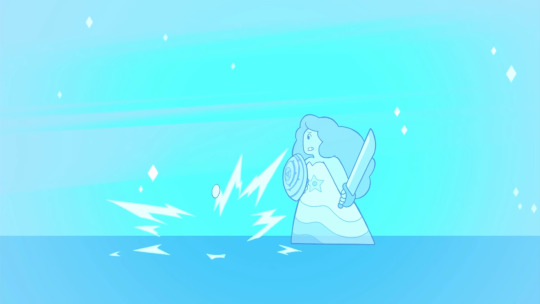


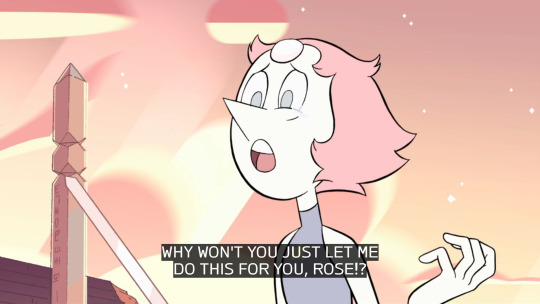
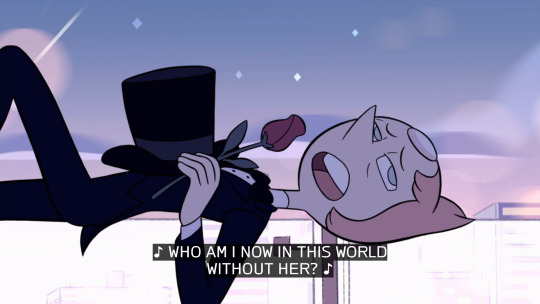
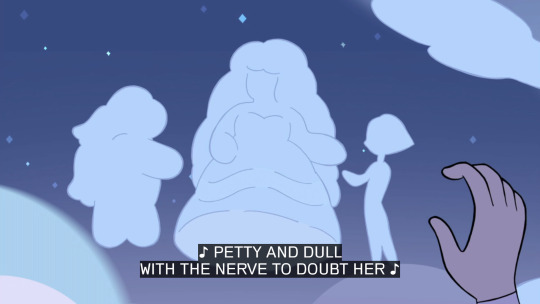




a lot of pearls character arc feels... relevant. to riku. or at least, it could be.
idk like. im well aware sora and rikus relationship is leagues healthier than rose and pearls. and sora is a much better person than rose was. but i just.
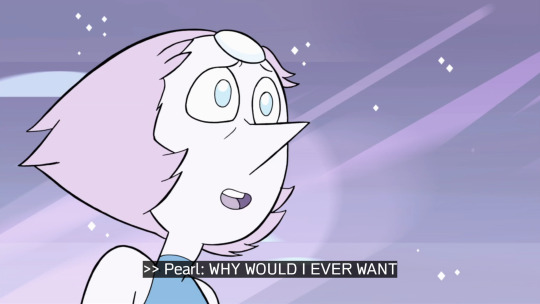
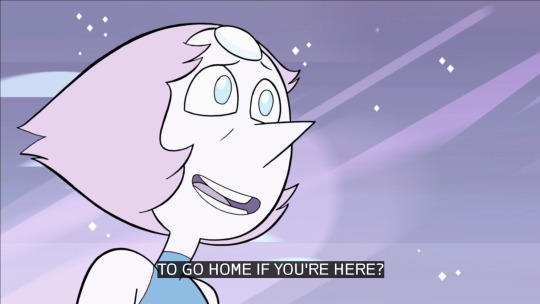

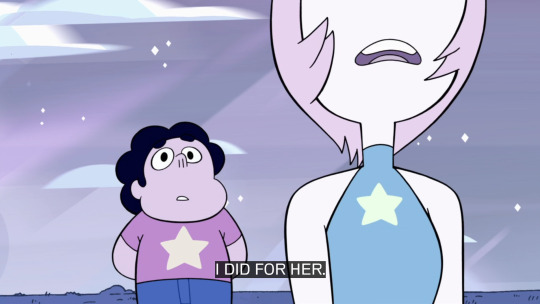
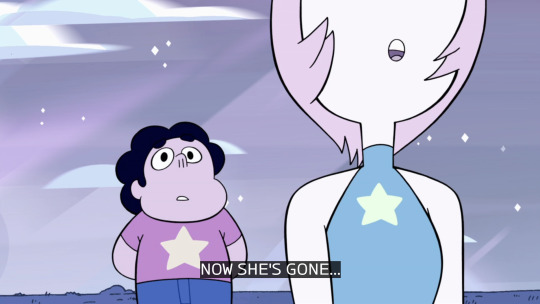


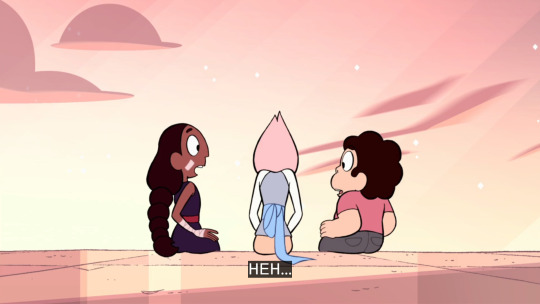
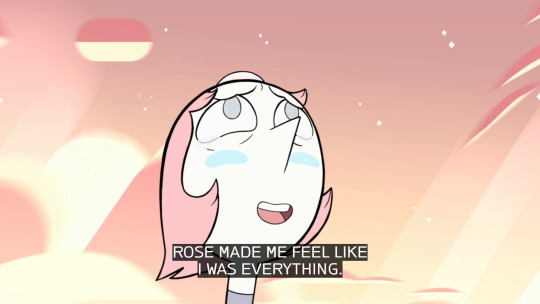
i see a lot of pearl in riku at times
#kingdom hearts#riku#riku kh#kh riku#soriku#kh3#kh3 spoilers#steven universe#long post#image heavy post#kh meta#ali's kh meta#like i wouldnt be surprised if kh just played it all straight and never went deeper into the harm of being dedicated solely to one person#keeping with the ideals of true love and fairytales#but at the same time it seems like they were /trying/ to somewhat deconstruct sora in kh3#with his 'my friends are my power' thing failing after everyones lost and him losing confidence in himself as a result#so who knows#anyway we stan our gay autistic knights on this blog#(i stan pearl significantly less than riku but i still love her)
106 notes
·
View notes
Text
Elden Ring and Introduction to the FromSoftware Meta-Narrative
If a rune is a story and a great rune is a great story, then what are the great stories represented by the Great Runes? The answer that I have arrived at: The abstract concept of FromSoftware's various videogame development pipelines. Afterall, the Elden Ring represents a metaphysical concept, so why not an examination of the past, present, and future identity of a company that produces videogames. Major spoilers ahead for Elden Ring, Bloodborne, and Armoured Core 6, and minor spoilers for several other FromSoft games.
Godrick's Great Rune
The Dark Souls (2011-2018) Great Rune seems obvious - Godrick's Great rune. If the 3 ringed shape wasn't the tip-off (corresponding to 3 games) then perhaps that the dragon figure on top of the Banished Knight helmet is the same creature as the Nameless King's mount. Dark Souls Eygon of Carim wears the Morne set and guards a fire keeper named Irena, while in Elden Ring Edgar of Castle Morne in Godrick's territory loses his eyes to frenzy after discovering the death of his daughter Irena.
Godrick himself seems to function as representative of Dark Souls Remastered, in a sense that the repulsive practice of grafting is being equated to the creative dead-end of revisiting old games such as Dark Souls (2011) and pasting on updated graphics and quality of life features while having to work around out-dated code. I think that Godefroy could be seen as a much earlier use of this practice as the difference between original Dark Souls and the Prepare to Die edition (2012) that included improvements + Artorius DLC. And Godwyn's parallel would be Dark Souls 3 (2016). I would thus consider Godwyn and Godrick as brothers in Elden Ring because in the internal logic of FromSoftware there were always planned to be a trilogy of Dark Souls games.
Dark Souls 2 is annoying to explain succinctly partially because it was directed by Naotoshi Zin Yui Taimura (correction: Naotoshi Zin was the supervisor, which was his role on all Dark Souls games as president of the company from 1986-2014) instead of Hidetaka Miyazaki. In short, there are some blurry lines between Dark Souls 2: Scholar of the First Sin and Bloodborne.
Malenia's and Miquella's Great Runes
Malenia herself has an obvious match in Sekiro: Shadows Die Twice (2019) - it is in the Dragon Rot being correlated to Scarlet Rot, the parallels between Malenia's dedication to Miquella and Wolf's dedication to Kuro, and that it's one of the few recent FromSoft games to be released without paid DLC or sequel (which as it happens is common among all empyrean and their game counterparts). Numerous people have commented that Malenia feels like a Sekiro boss to fight - although with the added twist of mechanics like clearing her poise break that allow her to "cheat" compared to the bosses of that game.
However, the exact nature of Malenia's Great Rune is more nebulous - probably could be a stand-in for multiple Japanese-style combat games in the catalogue including Shadow Assault: Tenchu (2008) and Otogi: Myth of Demons (2002). Certainly, it has been confirmed by FromSoftware representatives that Sekiro was internally considered a Tenchu game for some time before release, as discussed in the aptly titled 2018 GameSpot article "Sekiro: Shadows Die Twice Originally Started As A Tenchu Game".
Miquella may or may not have a Great Rune. If he does, it would correspond to games in a similar spirit to Déraciné (2018), the game which Miquella most likely represents. A much smaller game, the idea of which originated in the wake of Bloodborne's release at around the same time that the idea for Sekiro began to form - twin ideas. The game Kuon (2004) also seems to have served some inspiration for the Haligtree, as there is a side-story told about silkworms and a central Mulberry Tree in that game.
Radahn's Great Rune
Radahn's Rune represents the Armored Core franchise - or perhaps the broader idea of mech combat games - while he is himself a personification of Armoured Core 6: The Fires of Rubicon (2023). The opening part of his boss fight is an artillery bombardment, similar to the long range weapon capabilities of the AC units. The central motifs of AC6 are "fire" and "coral" - and the general theme of Caelid is using fire to control the rot that has eaten Radahn's mind and which manifests in the landscape as growths resembling coral reef.
A major part of Radahn's character is that he idolized Godfrey, who is himself embodying AC4 (2006)/4A (2008). The name "Loux" means "Lynx" - and in a departure from the Ravens of earlier titles AC4 introduces the Lynx units. It also simply makes sense that the progenitor of the Golden Lineage - who I previously correlated to Dark Souls - would be represented in the first game that Miyazaki directed.
And I can see the objection that this doesn't make sense because we know that Radahn must have been born before Malenia/Miquella, so how can he represent a game that came after? Simply: it's not about when the game idea was executed, but about when the concept was first proposed. FromSoftware probably knew that they would eventually return to Armoured Core at about the time they wrapped on AC5V.
Morgott and Mohg's Great Runes
Now that some boundary conditions have been set it is easier to speculate on the nature of Morgott and Mohg - AC5 (2012) and AC5V (2013), respectively. Points of comparison: 1) They are of the Golden Lineage as they preceded from AC4A represented by Godfrey, 2) They are omens that any game without Miyazaki attached will be perceived poorly in hindsight (as he did not direct either game), 3) The AC games were at the time FromSoftware's most well known and active franchise before being overshadowed by souls games - those touched by the Crucible were once considered divine and only later fell into disfavor.
But as I already mentioned, with speculation that Radahn holds the Armoured Core Great Rune Morgott and Mohg must have claimed some other stories. This also aids in understanding how they can exist as multiple copies - there is the version of them before and after claiming Great Runes that do not match their original natures. Morgott is the easiest to figure out - it's the Elden Ring (2022) Rune. There is one Great Rune in the entire game that is mandatory to beating the game, and it is the one held by Morgott. Perhaps this raises a question of how can the Elden Ring have a single Great Rune dedicated to itself, but as I have been attempting to describe - all FromSoftware games should be treated as a single body of work looking backwards from Elden Ring. The initial concept of an "Elden Ring" stretches back at least as far as Eternal Ring (2000), and Morgott's rune is described as an "anchor ring that houses the base" so it does have a central importance.
And there's a relatively straightforward answer to which game would be considered a twin to Elden Ring - Demon's Souls (2009). The leitmotif in the menu music for Elden Ring has been identified as a more triumphant version of the Demon's Souls menu music. The core themes of Elden Ring are also much concerned with philosophies of identity in much the same way that Demon's Souls explores the definition of the self as an entity that thinks (look up "Philosophical Analysis of Demon's Souls" by The Gemsbok on Youtube for more on this). And Elden Ring serves as something of a bookend to Demon's Souls - both games are divided into 6 sections via 6 stone structures (the Archstones of Demon's Souls and the Divine Towers of Elden Ring). The 6th Archstone of Demon's Souls is broken, but what lies beyond is a snowy landscape. Elden Ring finally provides access to that snowy landscape in the Forbidden Lands, which is again only available after defeating Morgott - and with the Great Rune being activated at the tower closest to this area.
But there are independent reasons why Mohg's Great Rune should be the one that encompasses Demon's Souls. The Demon's Souls franchise potential has been irreversibly corrupted by the recent remake. The philosophy is still generally intact - that is portrayed through text. But critical aspects of art design have been altered beyond recognition - mostly of interest to me is the portrayal of the Yellow Monk and the Fool's Idol and the area of Latria in general. Mohg himself has this in the design of his robes and trident which steal the motifs of the helix and the black flame but corrupt them in ways that read almost as gibberish compared to their deliberate uses elsewhere.
The four-armed doll of the Fool's Idol hints at who the original owner of this rune might have been - Ranni's mentor Renna. And through embodying the witch Renna, it may be that ownership of this rune was transfered to Ranni before she chose to discard it. Demon's Souls did generally fit the previously established criteria of Empyrean game (no sequels or DLC), but the potential for future games is lost now as creating a sequel to the original would alienate people confused by the aesthetic corruption of the remake. There is also a rabbithole here for what all this Great Rune encompasses because Demon's Souls itself did not spring out of nowhere - it is of a similar approach to game design that was previously last seen in Shadow Tower Abyss (2003) and Kingsfield IV (2001).
The Great Rune of the Unborn
The Great Rune of the Unborn is a difficult one to pin down through this method of unpacking the Great Runes as much as any other. It seems possible that Miquella wanted this Great Rune and thought that it could be obtained by arranging his own rebirth. It is also one of two stories that must be obtained for Ranni's Age of Stars to be possible (the other being Radahn's story) - indicating that it represents something that did not exist at the time of Elden Ring's release. Running low on demi-gods, perhaps this is best understood as Melina's Great Rune. It is implied through Melina's abilities to channel Marika's echoes and through her descriptor in the code "MarikaofDaughter" that she is an offspring of Marika. Contradictory to the other demi-gods who can typically be matched to FromSoftware games, Melina's bodiless status seems to indicate that she never has been and her burning at the Forge of Giants is acknowledgement that she never will be. A comparison can be drawn between Melina and the disembodied Ayre - voice of the Coral in AC6. The unrealized potential of the Great Rune of the Unborn seems a good match to Melina.
Rykard's Great Rune
So, by process of elimination there is one rune left and it is Rykard's Great Rune. Fitting that the one game candidate remaining is Bloodborne (2015). An article titled "How the Spirit of Bloodborne Lives on in Elden Ring" (posted on VG247 by Alan Wen) goes over the ways that Volcano Manor evokes Bloodborne. The Manor sits on top of a hidden town of gothic architecture similar to Yharnam being stacked on top Old Yharnam, the Ghiza's Wheel weapon found in the manor has a clear design lineage to the whirligig saw from Bloodborne, the Iron Virgin at Raya Lucaria transports the player to a secondary location similar to Bloodborne's Kidnappers. But to me, the most clear connection is the finding of the Serpent's Amnion and Rya's dismay of being born of a hideous ritual. This seems a form of call-back or iteration to the ending of Bloodborne that involves consuming four 3rds of umbilical cord and being reborn as a Great One - a repellent little squid-slug thing.
#FromSoftware#elden ring#bloodborne#armoured core#media analysis#fromsoftware meta-narrative#Naotoshi Zin's absurd astrology tarot moon logic fairytale deconstructive approach to game development#The man is practically a ghost but I assume he is responsible as founder and former president#Miyazaki takes over and it's like what if we draw on real psychology and history and transition out of pseudoscience#Or Zin specifically hired Miyazaki for his social science degree perspective with the goal of doing this - who knows#I woke up and chose to write all of this instead of anything else that I could have done with my afternoon#Might as well post it
13 notes
·
View notes
Note
White Horse won Grammy for Best Country song, put some respect on her name

My dislike of White Horse is so well-known by my friends that this was the response I got when it was a surprise song 💀
#it’s FINE I just think every other ballad on Fearless is better#and she could do something more interesting with the deconstruction of a fairytale idea#my post#ask#jake <3
10 notes
·
View notes
Text
saw the first volume of Cursed Princess Club in the store last Sunday as I was walking by the manga section, and the name was so unusual that I looked it up online when I got home, and found out it was on webtoons to read for free, and just finished it, and holy shit
literally one of the best stories I've ever read
#I don't even know where to begin it's just insanely well-written but also so deeply emotional and wholesome and wonderful#also there's a lady with a were-spider curse tied to her menstrual cycle which gets discussed casually and like#I've never seen menstruation discussed by fictional characters in such a natural and no big deal way it was fucking awesome#but literally everything about every character was so very well-written and presented in such a good way#like I dunno curses as analogies for disabilities and how they don't lessen a person's worth#and how people are still people deserving of love and how difficult self-love and self-acceptance can be#but also how important it is but also how it still sucks to live w/ certain things#and how you can be both angry about something and accepting of it at the same time#but also about how superficial and socially/culturally constructed ideals of beauty and worthiness are and how they're totally fake#and potentially harmful and also how it's possible to work around and against and restructure those ideals#but also it's about princesses (and a couple princes) kicking ass and being cool and also just being human#also I gotta hand it to the author for having a lady who totally enjoys sleeping around and isn't shamed for it whatsoever#there's also a character who's basically aroace and despite two men falling in love with her like#as soon as they find out she's not interested in relationships they back off and respect that and still treat her as a friend#and I dunno that's just neat#like it's satirical fantasy that deconstructs so many different fairytale tropes but it's also so genuine and sincere#that it somehow circles back to embody the heart of a fairytale in all the best ways possible#anyhow it's absolutely worth a read#oracle of lore
3 notes
·
View notes
Text
if valerie were into rwby which is a magical girl anime inspired by fairytales then she'd like princess tutu and revolutionary girl utena
#all 3 of those animes involve examining and deconstructing the genre conventions of fairytales#robi rambles
6 notes
·
View notes
Text
started reading kaze to ki no uta yesterday and uh. yeah no this is literally revolutionary girl utena except w/ french catholic school boys and written 20 years earlier.
#rgu is still cool bc of its deconstruction of fairytale tropes and the patriarchy#but like#u guys were not original at all huh#me
4 notes
·
View notes
Text
this is so specific to me only but. i was an og fan of The School for Good and Evil series. i *devoured* those books as a tween. im now watching the 2022 adaptation and... it being a movie MURDERS the pacing that made the books good.
also agatha being objectively ugly was SO important to the story. her actress is literally gorgeous, so all the comments about her being gross and ‘witchlike’ for... not wearing a dress when she first showed up and being kind of snarky fall flat. agatha was UGLY but she was GOOD!! she was loved and kind and brave and still ugly!!! even the ball scene where she has her ~glow-up~, the features that made her ‘ugly’ dont disappear- she literally just learns to smile and project happiness and her inner kindness and that’s what makes her pretty.
i also hate the direction they took for sophie. i guess it was to make her more sympathetic, but her viewing agatha as a charity case that she grew to love was such a great demonstration of her selfishness, but also her capacity to still love despite being vain and shallow and ambitious. in the movie, we’re told she earnestly loves aggie right from the start.
there’s also a bunch of small beats and the way things unfold that i know were done to cut time to fit in a movie-length runtime, and exposition dumps instead of it more naturally unfolding with the story... but the story suffers for it. it’s such an easy fix too!! just make it a TV show! it has the perfect pacing with the mystery elements and a clear overarching goal!! why did they make it a movie????
#the school for good and evil#i really liked the way the books meaningfully deconstructed fairytale tropes#what it had to say about archetypes especially the 'good' ones and how it restricts freedom and happiness#it tells us that love of your best friends is just as important as romantic love!! that it is equally fulfulling!#how sophie and tedros could only form a meaningful connection when the expectation of their traditional roles were stripped away#and how powerful that connection was#sophie wasnt a stealing harpy she had a tangible connection with a love interest that wasnt her own and it was good!!#also bi king tedros#AND they did the maleficient twist of ''true love's kiss' being platonic years before that movie came out!!!!#i dont think *all* the gender commentary is 100% on the money but it did have interesting things to say
12 notes
·
View notes
Text
"A Series of Unfortunate Events" perfectly translates and subverts the essence of fairytales.
It perfectly translates the essence of fairytale and despite NOT being a fairytale, fits the mold in many ways. It is the story of children who are sent into the metaphorical dark, dangerous and bizarre forest that is the world, after the loss of their parents ; they have to grow up and learn important lessons by encountering various strange situations and excentric characters, but also while fighting off villains and monsters motivated by greed or a pure desire to cause evil. Each of the Baudelaire sibling has a specific talent that serves to help them out of situations - like fairytale protagonists specific powers or gimmicks. The number three is a constant leitmotif in the story ; and Count Olaf is the perfect blend of all the various fairytale male villain-archetypes: he is the wicked stepfather/evil father, he is the greedy scoundrel, he is the impostor taking the place of the rightful hero, he is the evil wizard relying on tricks and disguises, he is the Bluebeard... There is no magic in this story, but the excentricity, absurd humor, nonsensical jokes and borderline surrealism of it all invites a strong sense of magic realism heightened by the constant mystery, vast conspiracies, unexplained references and strongly literary nature of this world. And a part of this "artificial" magic or "realist" magic at work here comes from the vast conflict between the two sides of VFD, which perfectly translates what in fairytales is this endless conflict between good and evil fairies, two incredibly powerful and bizarre groups of beings whose power ends up causing a massive influence and disastrous changes over the life and fate of protagonists, especially children that are often marked by their very birth as belonging to one side or another...
We have all the ingredients for a fairytale. And yet, the Series of Unfortunate Events subverts it all brilliantly in many ways.
The topic of morality, of the breaking of the good-and-evil, black-and-white pattern for example. The uselessness of any kind of "helper" or "donator" characters, forcing the protagonists to rely exclusively on themselves. The strong message that being nice and kind to everyone, that constantly playing by the rules or passively, silently enduring one's misfortunes will NOT help one defeat cheating villains and perverse criminals. And ultimately - the absolute refusal of any kind of happy ending - or even the refusal of any kind of complete or satisfying ending whatsoever.
Thanks to all that, the series (be it the books or the show), despite sticking to the fairytale genre through motifs, archetypes and plot devices, completely subverts and deconstructs your traditional "fairy story".
#a series of unfortunate events#asoue#fairy tales#fairytales#fairytale deconstruction#dark fairytale
83 notes
·
View notes
Text
just got home from ‘into the woods’! i went in blind and was wholly unprepared for how funny it was. act ii also hit like a fucking firetruck. also. little red riding hood. she is me for real.
#there wasn't one particular song that really stuck out to me as fantastic though#'your fault' was probably my favorite but that was more for the message/theme of the song rather than the song itself#act i had me like ok this is hilarious but standard fairytale stuff so am i really that impressed? not really#act ii had me like OKAY so we're deconstructing shit now... i'm very much into this
2 notes
·
View notes
Text
Reading over debates and flame wars on this site about the Jedi, Sith or literally anything about Star Wars made me realize how truly futile it is to have true debates on canon. You just can't.
All of the retcons, continuity errors, levels of canon and the differences between Legends and Disney canon just make everyone's arguments valid in their own selected universes. You can't really expect other people to simply drop their universes that they grew up with, bought merchandise and became attached (ironic) to in terms of characters. Having a discussion about worldbuilding or characterization is practically impossible.
It's like arguing on Luke's characterization, only one person in the discussion is using the Star Wars universe and the other is using the Percy Jackson universe as their basis. There's no connection; you're all right in your own universes. And it all just goes round and round and round forever.
#star wars#starwars#fandom#meta#prequel trilogy#original trilogy#sequel trilogy#PT#OT#ST#sw#seriously#you're all arguing in different universes#what is canon even#the only way you could actually argue was maybe if you set up specific texts or shows that the debate could have as evidence#give prep time and then have the debate#sw fandom#even the filters can't even be agreed on#disney and legends had a hard on for the “deconstruct the fairytale” lense#so all of the problems of the OT and PT can be viewed through that deconstruction lense and boy are they problematic from that#do you specifically have to use the fairytale lense for the first six movies and a denconstruction lense for everything else
6 notes
·
View notes
Text
I am....honestly....This Close to redrawing the pulling out the sword scene from r e v olu tionary g i rl ute na but with fem sniper and spy purely due to the one fanfic
#i've posted about three drawings for the fanfic on my art sideblog but haven't said much about it on my main#so linking it for context reasons#also for very-good-pls-read-i-NEED-to-talk-about-it reasons rip-the-author-getting-paragraph-long-comments-from-me reasons#but look LOOK it just waving my arms around#parallels okay not a perfect parallel obviously#sniper doesn't want to be any sort of prince to save anyone and spy isn't a 'passive' 'princess'#that's all r gu for its fairytale motifs and deconstruction#BUT what it does have. and is making me feral#is sniper's straightforwardness and spy's mask over a mask over a mask of a personality#and how they navigate lesbian romantic feels together with that#very ut en ant hy#and the way sniper manages to draw spy out from under her mask of a mask of a mask#like how u tena manages to draw out a silver of an thy from under her masks and coffin#spy being able to be herself for the first time and becoming friends with sniper. anth y getting a taste of true friendship with ut ena#and the latest chapter. with the references to venom and poison. my god might as well just stick in that cantarella scene#just. hello ????? both sit squarely in the category of lesbian themes and characters that make me go feral#also the sword pulling scene is just Iconic of lesbian pairings by this point probably any lesbian pairing#you can find art of one of them dressed as the ros e bride and one as a p rince pulling out a sword#personal //
5 notes
·
View notes
Text
thinking about “endgame” ships and the fact that even most bylers completely take for granted that every “canon” ship other than the One (you know the one) they don’t like is going to end the show in a happy relationship together… the more i look at them the less likely it seems to me that Any of them other than byler Should actually end up together
#i have like. some Big issues with all three main canon ships and i keep looking at them and comparing them and trying to look#past the surface you know and…… ive talked about it a bit already with lumix but jncy and jpper also kinda have some Big red flags…#the duffers have said not everyone’s gonna be happy with how it ends#everyone just expects the fairytale romance ending for ALL their faves but like… that’s not the happy ending some of them deserve OR should#(don’t kill me) Settle for tbh#idk i’m thinking a Lot#everyone’s all for deep deconstructive analysis except when it comes to the canon ships they actually like
4 notes
·
View notes